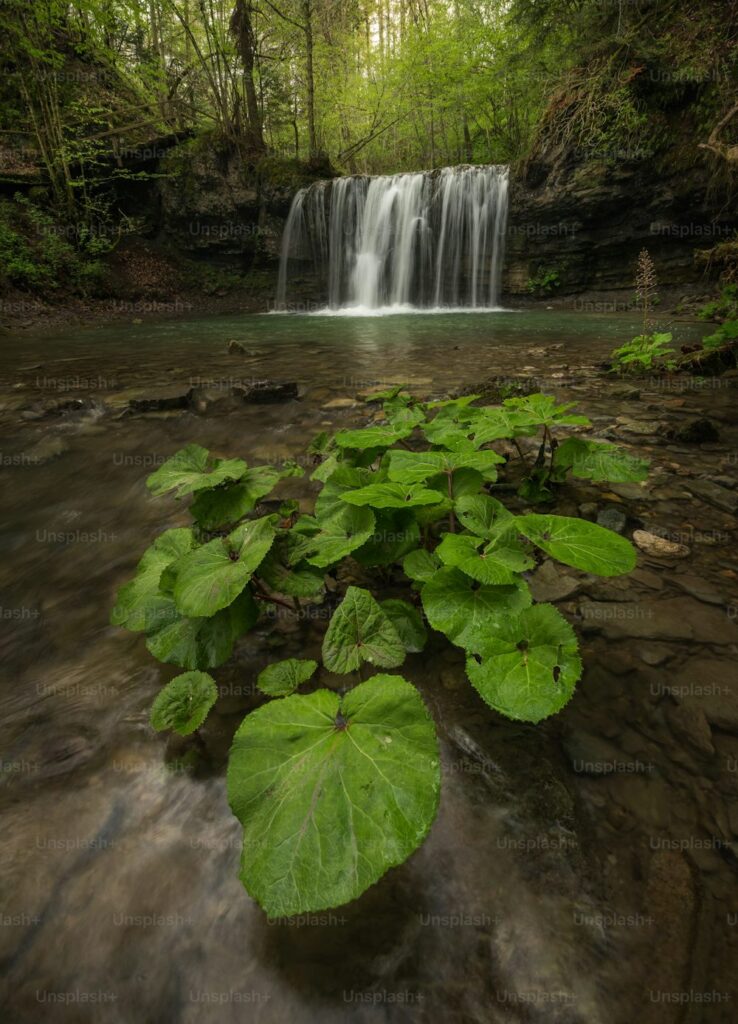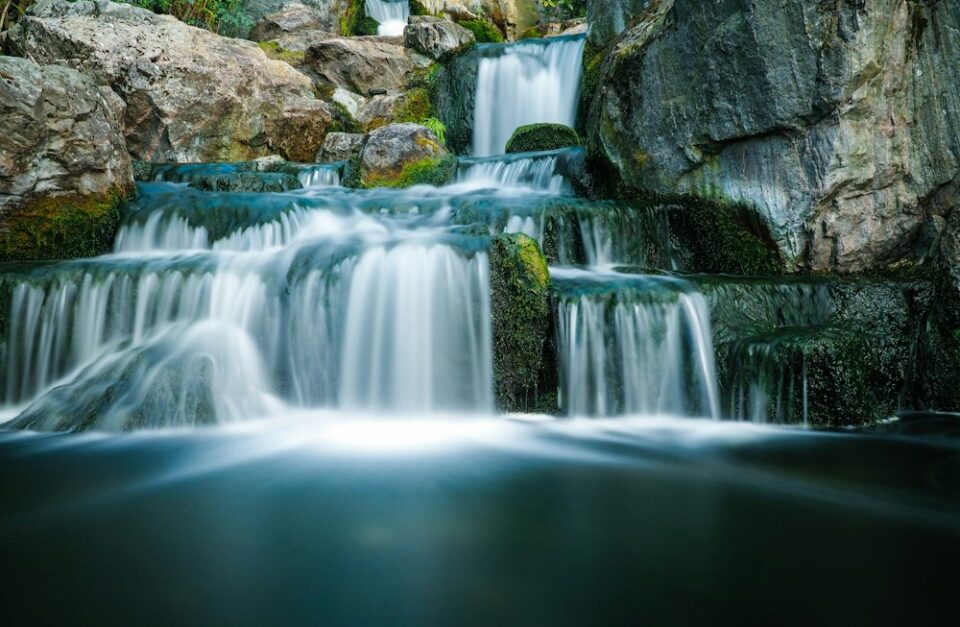Karuru Waterfall, nestled within the lush landscapes of the Aberdare Range in central Kenya, stands as a captivating testament to the country’s natural beauty and diverse ecosystems. Renowned as the largest waterfall in Kenya, Karuru’s majestic cascade weaves together geological wonders, vibrant biodiversity, and cultural significance, creating a spectacle that captivates both locals and visitors alike.
Situated in the Aberdare National Park, Karuru Waterfall is a masterpiece carved by the forces of nature over millions of years. The Aberdare Range, part of the Eastern branch of the East African Rift System, has played a crucial role in shaping the topography of the region. The volcanic activity and tectonic movements that shaped these mountains set the stage for the creation of this magnificent waterfall.
Karuru Waterfall’s descent unfolds in a series of cascades, creating an awe-inspiring spectacle as water plummets from considerable heights. The complex network of streams and rivulets that feed into the waterfall originates from the Aberdare Range’s high-altitude moorlands. These pristine and often mist-shrouded landscapes contribute to the sheer volume and purity of the water that eventually converges into the Karuru cascade.
The geographical features surrounding Karuru Waterfall are a testament to Kenya’s rich geological history. The Aberdare Range, formed by volcanic activity and subsequent erosion, harbors a diverse array of rocks, soils, and landforms. The waterfall’s rocky outcrops, formed from volcanic basalt and other sedimentary deposits, serve as the canvas upon which the cascading waters create their mesmerizing display.
As the waters of Karuru fall gracefully, they contribute to the vitality of the surrounding ecosystem. The Aberdare National Park is a haven for biodiversity, housing a remarkable variety of flora and fauna.
The lush vegetation along the banks of the Karuru River supports a rich tapestry of plant life, from moss-covered rocks to vibrant ferns and indigenous trees. This verdant ecosystem is not only visually captivating but also plays a crucial role in maintaining the ecological balance of the region.


The riverine forests surrounding Karuru Waterfall provide habitat and sustenance for a diverse array of wildlife. The Aberdare National Park is home to an impressive list of species, including elephants, buffalos, colobus monkeys, and a plethora of bird species. The presence of such a vibrant ecosystem around the largest waterfall in Kenya highlights the interconnectedness of geological features and biological diversity, emphasizing the need for conservation efforts to preserve these delicate ecosystems.
Beyond its geological and ecological significance, Karuru Waterfall holds cultural importance for the communities residing in the vicinity. The Aberdare Range has long been inhabited by various ethnic groups, each with its unique traditions and connections to the natural landscape.
The waterfall, with its grandeur and beauty, often features in local folklore and is considered a sacred site by some communities. The surrounding areas may host rituals, ceremonies, and celebrations that acknowledge the spiritual value of the waterfall within the cultural fabric of the region.The accessibility of Karuru Waterfall is another factor that adds to its allure.
While the Aberdare National Park ensures the preservation of its natural surroundings, the proximity of the waterfall to urban centers allows for a relatively straightforward journey for those eager to witness its splendor. The accessibility factor contributes to the waterfall’s popularity as a tourist destination, enabling a broader audience to appreciate and connect with the wonders of nature.
Visitors to Karuru Waterfall are treated not only to the breathtaking sight of the cascading waters but also to the symphony of sounds that accompany the spectacle. The rush of water, the rustling of leaves, and the calls of birds create a sensory experience that immerses visitors in the natural ambiance of the Aberdare Range.
This multisensory encounter further reinforces the profound impact that Karuru has on those fortunate enough to stand in its presence.
Conservation efforts are paramount to safeguarding the ecological balance and cultural significance of Karuru Waterfall. The Aberdare National Park serves as a protected area, emphasizing the importance of preserving the delicate ecosystems that contribute to the waterfall’s splendor. Sustainable tourism practices, community involvement, and education initiatives play crucial roles in ensuring that future generations can continue to appreciate and benefit from the largest waterfall in Kenya.
As one stands in the presence of Karuru Waterfall, there is a profound sense of connection to the Earth’s geological evolution. The Aberdare Range, with its ancient rocks and sculpted landscapes, serves as a living testament to the dynamic processes that have shaped our planet over millennia.
The geological story told by the rocks surrounding Karuru Waterfall adds depth to the appreciation of this natural wonder, inviting contemplation on the immense timescales involved in the creation of such majestic features.
The cycle of water, from the mist-shrouded moorlands to the dramatic plunge of the waterfall, represents more than a mere physical process; it symbolizes the interconnectedness of Earth’s systems.
The purity of the water that courses through Karuru is a testament to the delicate balance maintained by the Aberdare ecosystems. It highlights the importance of preserving not only the waterfall itself but the entire watershed that sustains its flow.
The visual spectacle of Karuru Waterfall is a manifestation of the power of erosion, patiently shaping the landscape over eons. The rocky outcrops, worn smooth by the relentless force of water, provide a canvas for the dance of liquid energy. The transformative nature of erosion, while seemingly gradual, underscores the impermanence of geological forms and the dynamic nature of the Earth’s surface.
Karuru’s significance extends beyond its geological and ecological facets; it serves as a source of inspiration for artists, writers, and nature enthusiasts.
The captivating beauty of the waterfall has the power to evoke a sense of wonder and appreciation for the natural world. Artists may seek to capture its essence on canvas, while writers find inspiration in the rhythmic flow of its waters, weaving its story into the broader narrative of the Aberdare Range.
The largest waterfall in Kenya is not merely a static natural feature; it is a dynamic, living entity that responds to the changing seasons and weather patterns. During the rainy season, the volume of water surging over the precipice intensifies, creating a thunderous roar that reverberates through the surrounding landscape. In contrast, during the dry season, the waterfall may transform into a gentler cascade, revealing the adaptability and resilience of this natural masterpiece.
Karuru Waterfall stands as a testament to Kenya’s natural beauty, geological history, and cultural richness. As the largest waterfall in the country, it weaves together the forces of nature, biodiversity, and human culture into a tapestry of wonder.
From its origins in the Aberdare Range to its descent into the river below, Karuru Waterfall embodies the interconnectedness of geological features, ecological systems, and cultural heritage. As visitors marvel at its grandeur, they are reminded of the importance of conservation efforts to preserve these natural treasures for generations to come.

